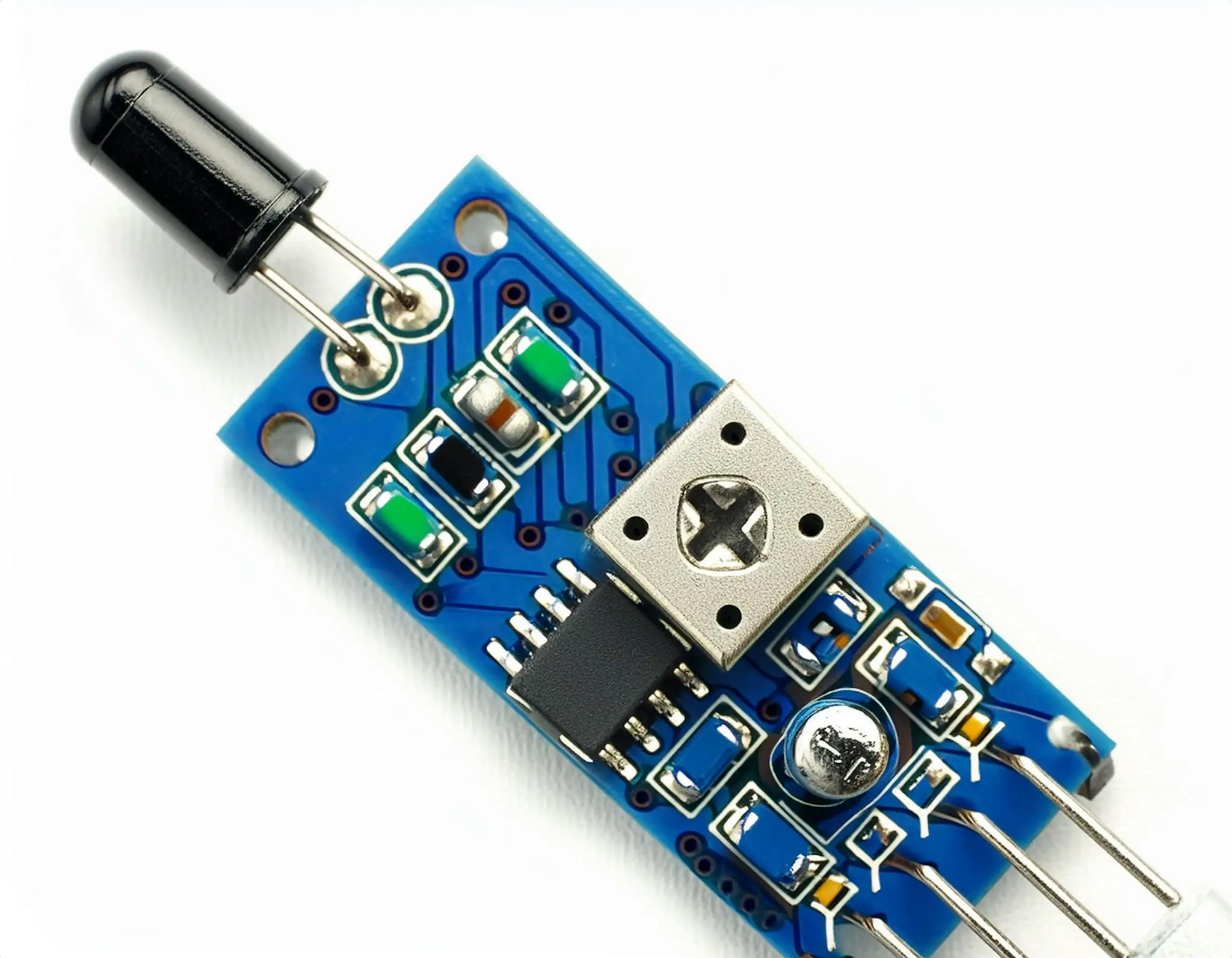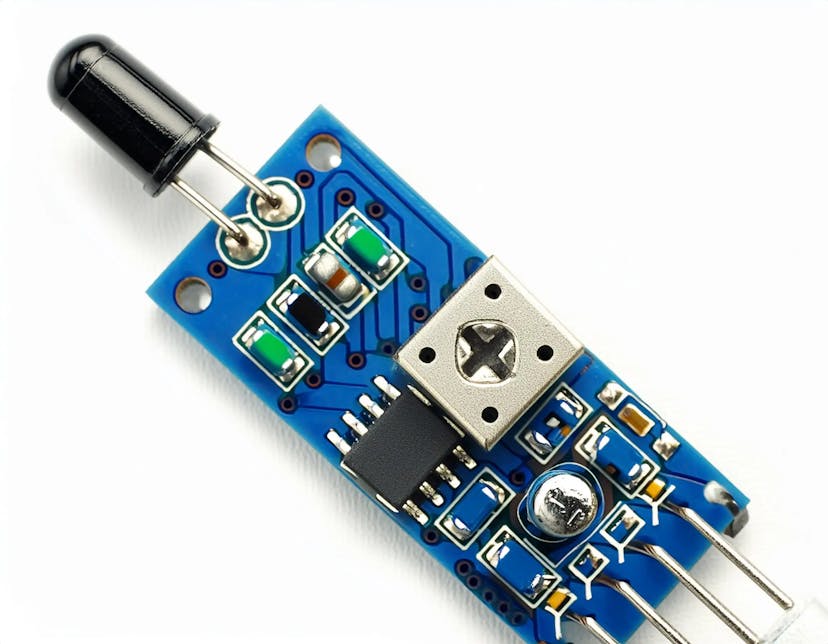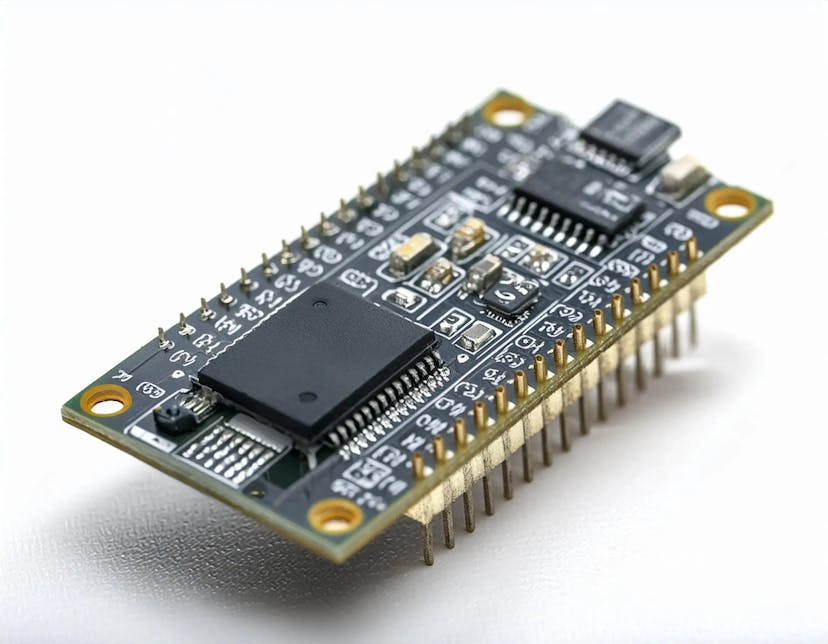Flame Sensor
- THN
- 09 Mar 2024
Flame sensors are pivotal components in fire detection systems, offering a reliable means of detecting flames and fire outbreaks. When integrated with Arduino microcontrollers, these sensors become powerful tools for building fire detection and monitoring systems. In this guide, we'll delve into the working principle, usage, accuracy, and applications of Arduino flame sensors.
Working Principle of Arduino Flame Sensors
Arduino flame sensors work on the principle of detecting specific wavelengths of light emitted by flames. They typically consist of a photodiode, a bandpass filter, and amplification circuitry. When exposed to flame-generated light, the photodiode generates a current proportional to the intensity of the detected light. This current is then processed by the amplifier to produce an output signal indicative of the presence or absence of flames.
Usage of Arduino Flame Sensors
Arduino flame sensors are straightforward to use:
-
Connect the Sensor: Start by connecting the flame sensor to the Arduino board. Most flame sensors utilize digital or analog outputs for interfacing with Arduino. Refer to the sensor datasheet or documentation for pinout details.
-
Upload Code: Write or download the appropriate Arduino code for interfacing with the flame sensor. This code typically involves initializing the sensor, reading its output, and performing desired actions based on the detected flame intensity.
-
Calibration (Optional): Some flame sensors may require calibration to adjust sensitivity levels or threshold values. Follow the calibration instructions provided in the sensor documentation.
-
Testing: After connecting the sensor and uploading the code, test the system by exposing the sensor to different flame sources. Verify that the sensor reliably detects flames and produces the expected output.
Accuracy of Arduino Flame Sensors
Arduino flame sensors offer high accuracy in detecting flames, provided they are properly calibrated and installed in suitable environments. Factors influencing sensor accuracy include:
-
Sensitivity: Adjusting the sensor's sensitivity level ensures optimal detection performance while minimizing false alarms.
-
Environmental Conditions: Ensure that the sensor is installed in an environment free from excessive ambient light, smoke, or other sources of interference that may affect detection accuracy.
-
Calibration: Regular calibration of the sensor helps maintain accuracy over time and ensures consistent performance.
Applications of Arduino Flame Sensors
Arduino flame sensors find applications across various domains, including:
-
Fire Detection Systems: Used in residential, commercial, and industrial buildings for early detection of fire outbreaks, triggering alarms, and activating fire suppression systems.
-
Safety and Security: Employed in gas stoves, ovens, and other appliances to detect malfunctions and prevent fire accidents. Also used in automotive safety systems to detect engine fires and electrical faults.
-
Industrial Automation: Integrated into combustion processes, furnaces, and boilers to monitor flames and ensure operational safety and efficiency.
-
Research and Development: Valuable tools for researchers and hobbyists working on projects related to fire safety, environmental monitoring, and combustion analysis.
Conclusion
Arduino flame sensors are essential components in fire detection and monitoring systems, offering high accuracy and reliability in detecting flames. By understanding their working principle, usage, and applications, developers can leverage these sensors to enhance safety and security in various environments.


